Digital Poster
Neurodegenerative Diseases
ISMRM & ISMRT Annual Meeting & Exhibition • 10-15 May 2025 • Honolulu, Hawai'i

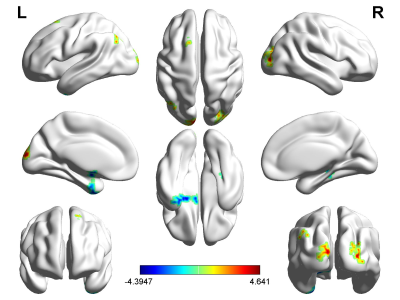 |
Computer Number: 33
1562. Altered
neurovascular coupling in Parkinson's disease with olfactory
dysfunction.
Z. Li, B. Chen, G. Fan, Y. Jiang
The First Affiliated Hospital of China Medical University, Shenyang, Liaoning Province, China, China
Impact: The results of the present study explain the
altered neurovascular coupling in olfactory dysfunction in
PD and contribute to the elucidation of the possible
mechanisms underlying the development of olfactory
dysfunction.
|
|
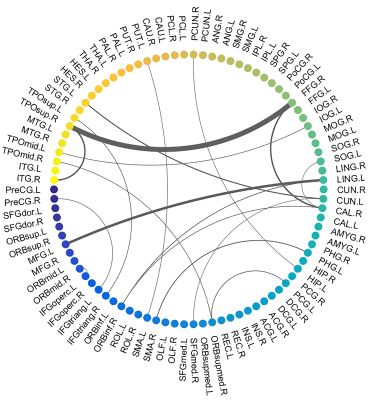 |
Computer Number: 34
1563. Using
rs-fMRI and contrastive learning to explore changes in the
Parkinson's disease brain network and correlations with gait
impairment
R. An, X. Wei, L. Dong
Beijing Friendship Hospital Affiliated to Capital Medical University, Beijing, China
Impact: This study demonstrated the higher
classification efficacy of BrainNetCNN+CL as well as the
large-scale brain network alterations in PD patients.
|
|
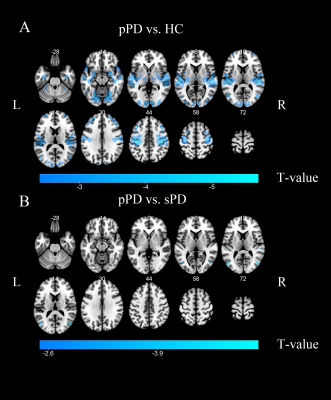 |
Computer Number: 35
1564. Impaired
interhemispheric synchrony in Parkinson's disease patients with
progressive cognitive impairment
X. Wang, Q. Yu, Y. Zhou, F. Yan
Ruijin Hospital, Shanghai Jiao Tong University School of Medicine, Shanghai, China
Impact: z-VMHC values within the MTG and MOG and
calcarine cortex appeared to be potential neuroimaging
features to distinguish pPD patients from sPD groups.
|
|
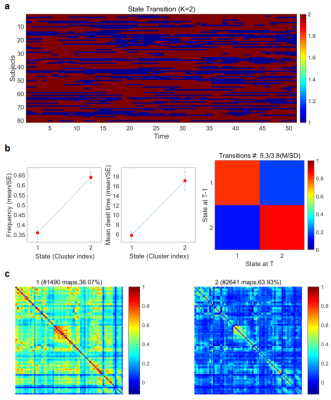 |
Computer Number: 36
1565. Distinct
Dynamic Functional Connectivity Patterns in Tremor-Dominant and
Gait Disturbance Subtypes of Parkinson’s Disease
Y. Zhou, W. Wei, X. Wang, K. Ding, S. Liu, M. Wang, K. Li,
X. Zhang, m. wang
Department of Radiology, Xinxiang Medical University People's Hospital & Henan Provincial People's Hospital, zhengzhou, China
Impact: These findings may inform personalized treatment
strategies and promote further inquiries into neural
connectivity variations in Parkinson's disease subtypes.
|
|
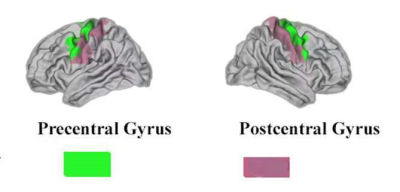 |
Computer Number: 37
1566. Abnormal
Multilayer Brain Network in Early-Stage Akinetic-Rigid
Parkinson’s Disease
K. Ding, Y. Shen, Y. Ge, X. Wang, Y. Bai, W. Wei, X. Zhang,
M. Wang, K. Li, M. Wang
Henan University People's Hospital & Henan Provincial People's Hospital, Zhengzhou, China
Impact: AR-PD patients showed abnormal dynamic brain
network switching and increased modularity, linked to
clinical measures like motor function.
|
|
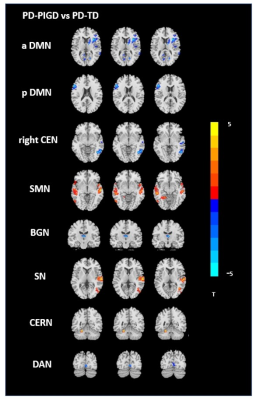 |
Computer Number: 38
1567. Altered
large-scale global brain networks in distinct motor subtypes of
Parkinson's disease.
M. Guo, Y. Jiang, G. Fan
The First Affiliated Hospital of China Medical University., Shenyang, China
Impact: These findings clarify neuroimaging differences
across PD motor subtypes, potentially reveal early imaging
biomarkers, and offer a new perspective to support clinical
diagnosis and treatment.
|
|
 |
Computer Number: 39
1568. Integrating
effective and functional connectivity shows disrupted
oscillatory and causal dynamics in multiple sclerosis
R. Lorenzi, G. Korkmaz, F. Ravera, A. Alahmadi, R. Samson,
E. D'Angelo, F. Palesi, A. Toosy, C. Gandini Wheeler
Kingshott
Università di Pavia, Pavia, Italy
Impact: Integrating effective and functional
connectivity detects shifts between causal-driven and
oscillation-driven dynamics in physiological and
pathological conditions. This novel approach offers an
opportunity to develop rehabilitation protocols based on the
interplay between neuronal activity and brain oscillations.
|
|
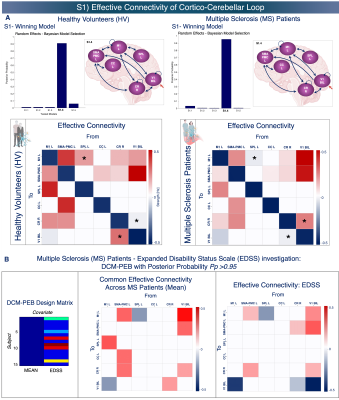 |
Computer Number: 40
1569. Dynamic
Causal Modelling identifies abnormal effective connectivity
between supratentorial cortex and cerebellum in Multiple
Sclerosis.

G. Korkmaz, R. Lorenzi, A. Alahmadi, F. Ravera, R.
Samson, E. D’Angelo, F. Palesi, A. Toosy, C. Gandini
Wheeler-Kingshott
University of Pavia, Pavia, Italy
Impact: Investigating
how MS affects the cortical and cerebellar involvement
during a visuomotor task provides better understanding of
excitatory/inhibitory mechanisms and unravel the disease
impact on brain networks. DCM can lead to more mechanistic
insights into MS progression and therapeutic targets.
|
|
 |
Computer Number: 41
1570. Preliminary
Analysis of rTMS-iTBS effects on Resting-State Functional
Connectivity in Mild Cognitive Impairment: Targeting DLPFC vs.
LPC
D. Kang, K. Welker, M-H In, J. Huston III, M. Lapid, Y. Shu
Mayo Clinic, Rochester, United States
Impact: Understanding
the target-dependent effects of iTBS may help personalize
treatment strategies for mild cognitive impairment,
potentially leading to optimized cognitive outcomes for
patients with neurodegenerative conditions.
|
|
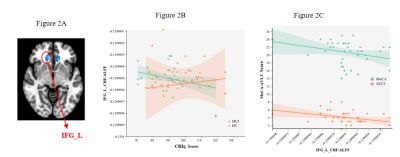 |
Computer Number: 42
1571. Correlation
of cognitive reserve, neurovascular coupling and cognitive
function in patients with mild cognitive impairment
w. yang, l. zhou, k. Ai, j. zhang
The Second Hospital of Lanzhou University, gansu, China
Impact: Individuals with higher CR demonstrate better
cognitive function levels. Differential neurovascular
coupling in specific brain regions between HC and MCI groups
suggests a potential neural mechanism by which CR influences
cognitive function.
|
|
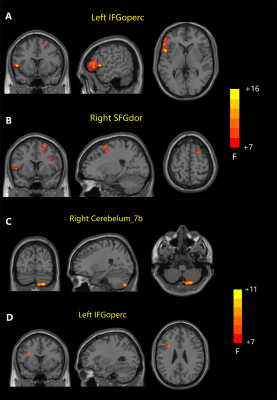 |
Computer Number: 43
1572. Abnormal
static and dynamic functional connectivity in the triple network
model of Alzheimer's disease
Q. Feng, L. Wang, Z. Ding, Q. Wen
The First People's Hospital of Hangzhou, China, Hangzhou, China
Impact:
The alterations of sFC and dFC values within the triple network model are helpful to study the potential pathophysiology of AD and aMCI, and might be important biomarkers to improve the diagnostic efficiency of AD and aMCI. |
|
 |
Computer Number: 44
1573. Phase
synchronization between task-positive and task-negative brain
networks using Hilbert Huang Transform for Alzheimer’s disease
P. Pattiam Giriprakash, F. Cieri, X. Zhuang, Z. Yang, C.
Han, D. Cordes
Cleveland Clinic, Las Vegas, United States
Impact: Phase synchronization via EMD offers brain
connectivity analysis with higher temporal resolution and
frequency specificity. It could track network disruptions
during disease progression. It could also highlight the
influence on amyloid deposition, revealing insights on
pathophysiology mechanisms involved in AD.
|
|
 |
Computer Number: 45
1574. Poorer
cerebrovascular reactivity in cognitively intact individuals
with APOE4 detected using resting state BOLD-fMRI
Z. Potvin-Jutras, P-L Tremblay, R. N. Spreng, S. Villeneuve,
C. Steele, C. Gauthier, P-A Research Group
Concordia University, Montreal, Canada
Impact: These findings suggest that individuals without
cognitive impairment who carry the APOE4 genotype present
lower cerebrovascular reactivity in multiple gray matter
regions compared to non-carriers. Cerebrovascular reactivity
may be an early biomarker of cerebrovascular dysfunction in
individuals with APOE4 alleles.
|
|
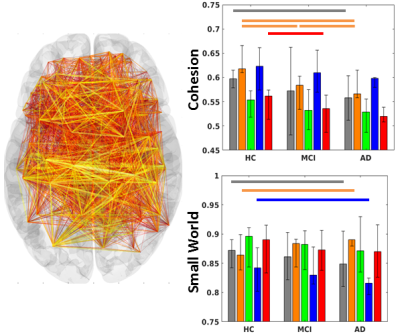 |
Computer Number: 46
1575. Functional
connectivity-based sub-network changes related to Alzheimer’s
disease progression based on group cohesive parcellation of
rsfMRI
A. Nemani, M. Lowe
Cleveland Clinic, Cleveland, United States
Impact: The data demonstrate increasing disorganization
within the brain with potential compensatory reorganization
in other sub-networks.
|
|
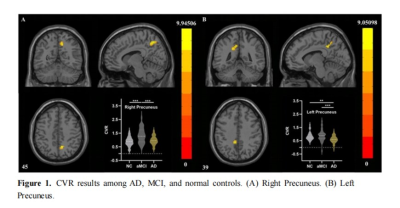 |
Computer Number: 47
1576. Differential
Cerebrovascular Reactivity in the Precuneus: A Resting-State
fMRI Study of Alzheimer's Disease and Mild Cognitive Impairment
x. tang, L. Wang, Q. Feng, H. Hu, Q. Wen, Y. Zhu, Z. Liao,
Z. Ding, X. Xu
School of Medical Imaging, Hangzhou Medical College, Hangzhou, China
Impact: Cerebrovascular reactivity (CVR) obtained by
rs-fMRI in the precuneus can reflect the cognitive function
impairment in patients with MCI and AD, and might be a
potential biomarker for assessing cognitive dysfunction.
|
|
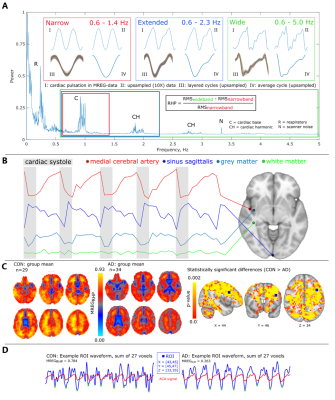 |
Computer Number: 48
1577. Reduced
relative harmonic power of diastolic cardiovascular impulses in
Alzheimer’s disease
J. Kananen, A. Koivula, V. Perkiömäki, V. Korhonen, M.
Järvelä, J. Kruger, V. Kiviniemi
University of Oulu, Oulu, Finland
Impact: This study introduces new method, a
frequency-based approach to assess cardiovascular brain
impulses in Alzheimer’s disease (AD) patients. Findings
reveal altered impulse patterns in regions usually affected
by AD, offering potential biomarkers for understanding AD’s
impact on brain hydrodynamics.
|
The International Society for Magnetic Resonance in Medicine is accredited by the Accreditation Council for Continuing Medical Education to provide continuing medical education for physicians.